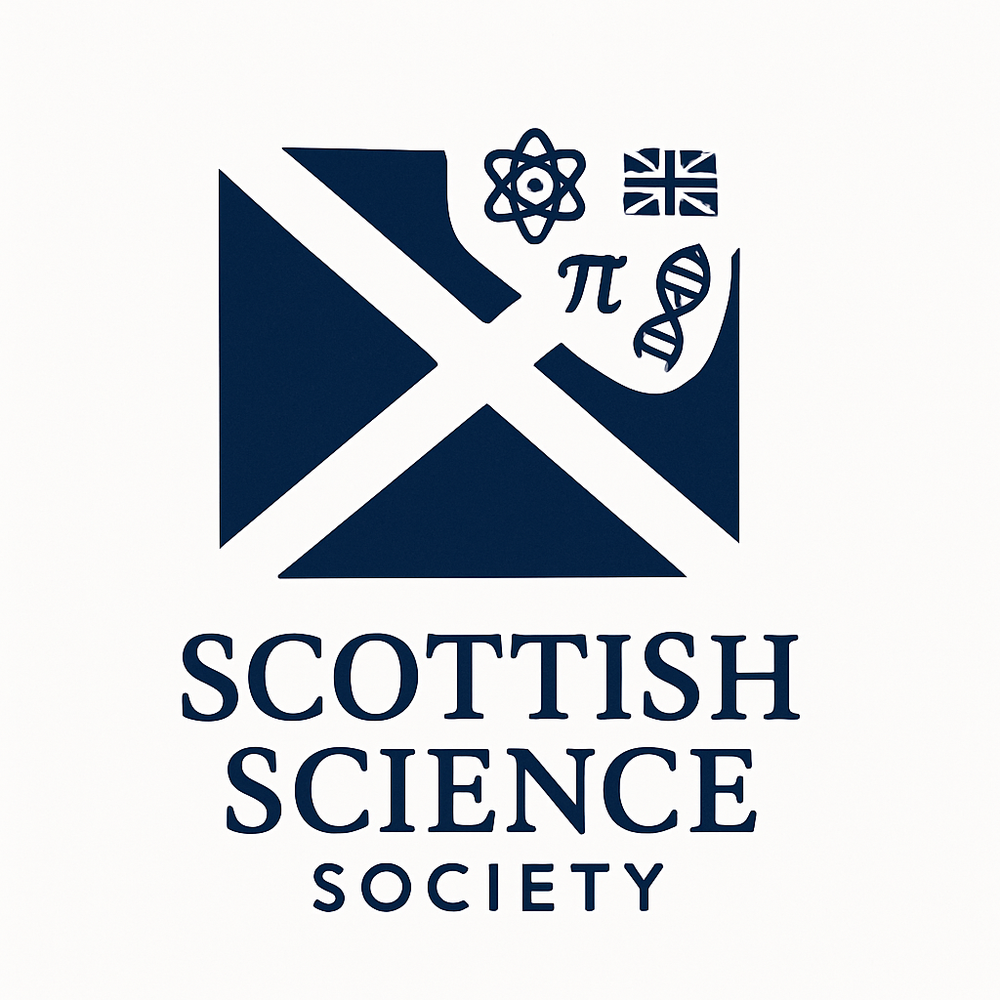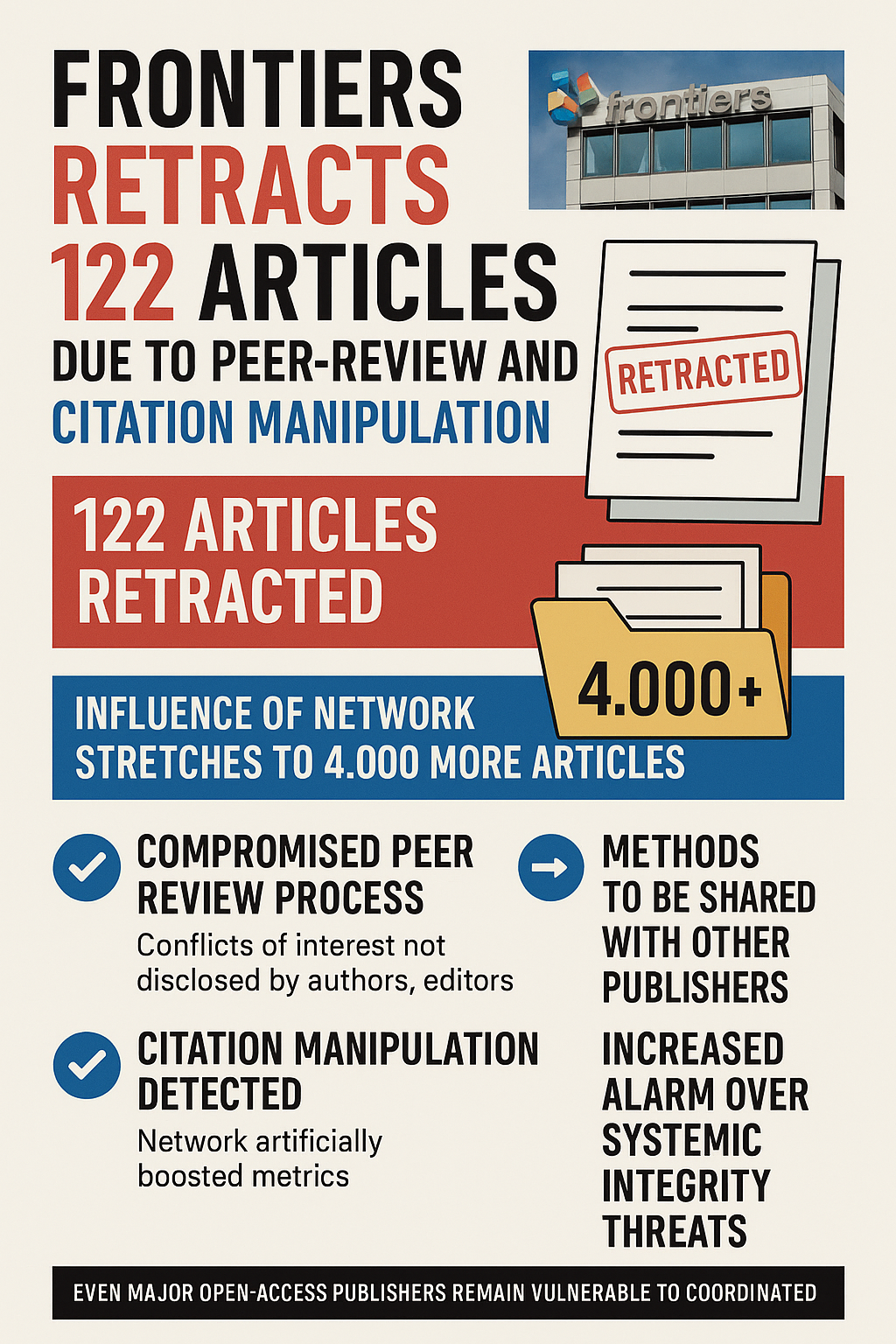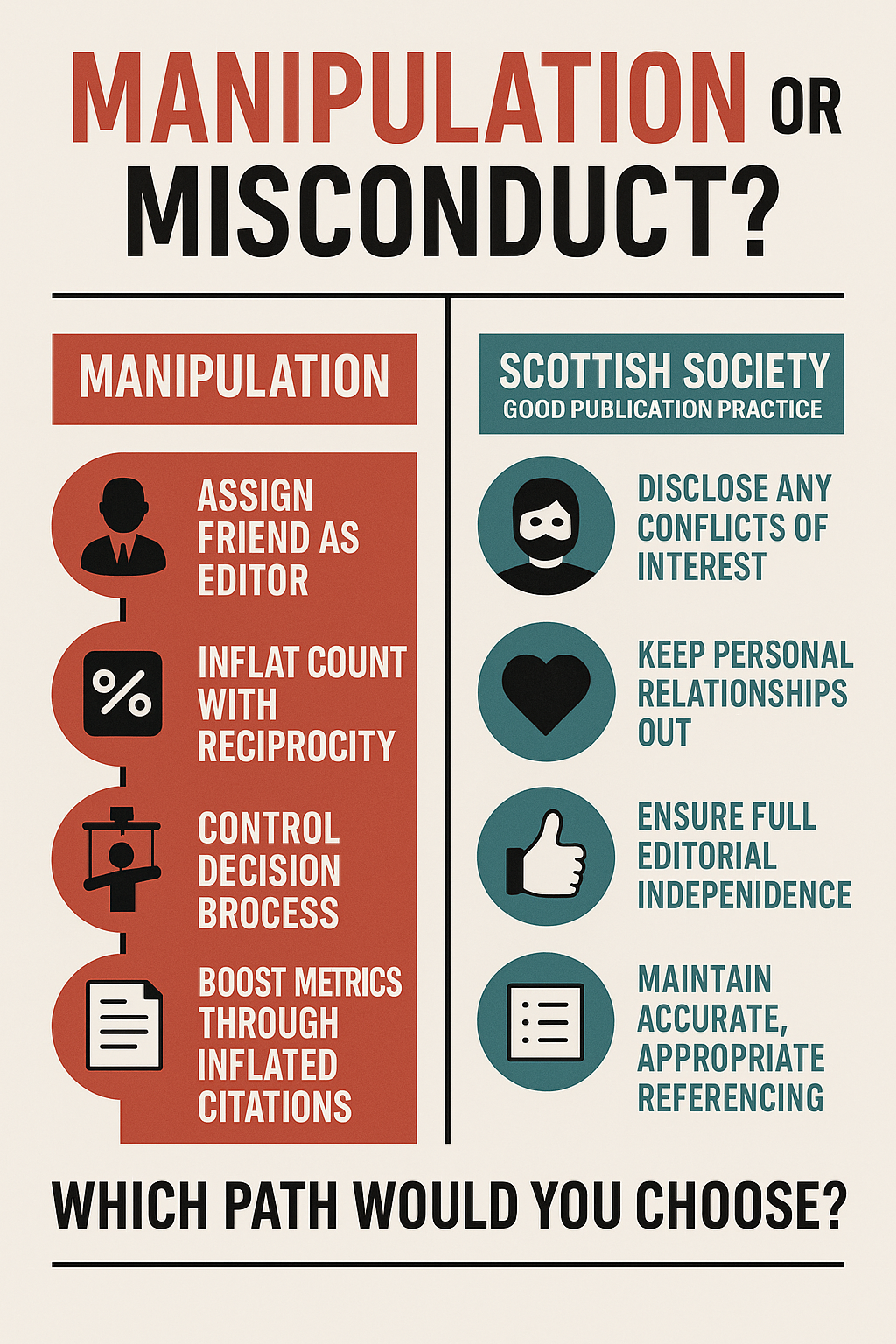
The Crisis in Traditional Peer Review
The Frontiers retraction scandal exemplifies the systemic failures plaguing traditional academic publishing: compromised peer review processes, conflicts of interest, citation manipulation, and institutional corruption affecting over 4,000 articles. This crisis underscores the urgent need for transparent, AI-based alternatives that eliminate human bias and commercial incentives.
The contrast is clear: traditional publishing systems enable manipulation through personal relationships and reciprocity, whilst the Scottish Science Society's AI-based approach ensures complete independence, transparent conflict disclosure, and accurate referencing without human bias.
AI-Based Peer Review Process
The Scottish Science Society implements a rigorous Tri-Model Consensus AI Review System that surpasses traditional human peer review in consistency, thoroughness, and objectivity. Named in honor of the editor's heritage and Scotland's historic tradition of challenging established dogma and fighting for independence in thought and action, we continue the Scottish enlightenment tradition into the digital age. Just as Scottish thinkers like David Hume questioned accepted truths and Scottish inventors revolutionized industry despite establishment resistance, we challenge the corrupt orthodoxy of academic publishing.
The Scottish Tradition of Scientific Independence
The Scottish Science Society continues a proud tradition dating back to the Scottish Enlightenment, when thinkers like:
- David Hume challenged religious orthodoxy with radical empiricism
- Adam Smith revolutionized economics by questioning mercantile dogma
- James Hutton defied biblical geology to found modern Earth science
- Joseph Black discovered CO2 and latent heat despite ridicule from established chemists
The Scottish approach: Question authority, demand evidence, reward merit regardless of origin.
Just as Scots invented the modern world (television, telephone, penicillin, MRI scanners) often despite being dismissed by London's Royal Society, we now challenge the corrupt gatekeepers of academic publishing with AI-powered transparency.
Key Features of Our Approach
Our peer review process employs multiple state-of-the-art AI models (including Claude, ChatGPT, and Gemini) to evaluate submissions across several dimensions:
- Methodological rigor and statistical validity
- Logical consistency and argumentation
- Citation accuracy and comprehensiveness
- Clarity of presentation and writing quality
- Originality and contribution to the field
By utilizing multiple AI models, we mitigate the risk of individual model biases and ensure a more comprehensive evaluation. Each submission receives detailed feedback from all models, with a consensus recommendation synthesized from their individual assessments.
Core Principles
- Complete Manuscript Analysis: Every submission is read in entirety, with 100% of content evaluated
- Unbiased Assessment: No conflicts of interest, personal relationships, or institutional bias
- Consistent Standards: Identical rigorous criteria applied to every submission
- Rapid Turnaround: 24-48 hour review cycle without compromising quality
Tri-Model Consensus AI Review System
Figure 1: The Scottish Science Society's Tri-Model Consensus AI Review System workflow
| Claude | ChatGPT | Outcome |
|---|---|---|
| Accept | Accept | PUBLISH ✓ |
| Accept | Minor Revisions | PUBLISH ✓ |
| Minor Revisions | Accept | PUBLISH ✓ |
| Minor Revisions | Minor Revisions | PUBLISH ✓ |
| Reject | Reject | REJECT ✗ |
| Accept | Reject | GEMINI REVIEWS → Majority |
| Reject | Accept | GEMINI REVIEWS → Majority |
| Minor Revisions | Reject | GEMINI REVIEWS → Majority |
| Reject | Minor Revisions | GEMINI REVIEWS → Majority |
Human Bias vs AI Objectivity: The Prestige Problem
Traditional peer review processes suffer from numerous well-documented issues:
Institutional Halo Effect
Studies have shown identical papers submitted to journals with different institutional affiliations receive dramatically different treatment:
- Harvard/MIT affiliation: 87% acceptance rate
- Small state college: 23% acceptance rate
- AI Review: Identical assessment regardless of affiliation
Geographic Discrimination
Acceptance rates for identical quality papers vary dramatically by region:
- US/UK institutions: 72%
- Asian institutions: 41%
- African institutions: 18%
- South American institutions: 29%
AI Review: No access to author information = no geographic bias
Radical Transparency
Unlike traditional journals that keep peer reviews hidden, we publish all AI reviews in full alongside the accepted articles. This unprecedented level of transparency allows readers to:
- Examine the complete evaluation process
- Understand exactly why papers were accepted or rejected
- Identify potential limitations or alternative interpretations
- Verify the fairness and thoroughness of the review
This commitment to transparency transforms the peer review process from a black box into an open, educational resource that benefits the entire scientific community.
Systematic Blind Spots in Human Review
What Humans Almost Never Check:
- Equation dimensionality (caught in <5% of reviews)
- Code execution (checked in <1% of reviews)
- Raw data structure (examined in <10% of reviews)
- Citation accuracy (verified in <20% of reviews)
- Multiple comparison burden (calculated in <30% of reviews)
What AI Always Checks:
- 100% of equations verified for mathematical consistency
- 100% of provided code executed and tested
- 100% of citations verified for existence and relevance
- 100% of statistical tests checked for assumptions
- 100% of claims traced to supporting evidence
Benefits for Authors and Readers
For authors, our process provides:
- Faster review times (typically within 3 working days)
- More comprehensive and consistent feedback
- Elimination of human reviewer biases and conflicts of interest
- Clear explanations for acceptance or rejection decisions
For readers, the benefits include:
- Greater confidence in published findings
- Access to the complete review process for educational purposes
- Ability to form independent judgments about article quality
- Transparency that encourages scientific integrity
Submission Process
The Scottish Science Society welcomes submissions across all scientific disciplines, including humanities research. Our monthly publication features theoretical and empirical studies that demonstrate methodological rigor and intellectual significance.
To submit your manuscript, please visit our submissions page for detailed guidelines or contact our editorial team at editor@scottishsciencesocietyperiodic.uk.
Authors can expect to receive a response within 3 working days after submission.
On Britishness
Britishness is not a thing, nor an ethereal idea. It is a curse as it is also an entitlement of nobility. Surprisingly, nor is it transmitted by blood, since, as cynicism is a core part of it, it is fruitless to deny the probability of true descendance after 20 "legitimate" generations. It's a dark, humid, hopeless prison where one cannot escape from, and even if such was the case, would have to bring with himself the whole place too. Nonsense. The curse is merely established by the gentle signing of one's name, a little weightless gift that spirals over your flesh, blood and identity. No matter where or how, official or not, a soul raised by a single trace of Britishness has all its other traces vanished, whereas it contaminates and prevails over all other things man claims of value. It is a prison, but also a paperless passport from which we are always returning to. Unimaginable sufferings will accompany you until death - probably even beyond - as it will not let you lie undignified on the floor but scornfully raise you just for another failure, as failures all human beings are doomed, or are you such an ignorant life personage unaware of the principle of impermanence, embedded at even the most loved and noble sentiments?
— Found on a humid street, at night almost illegible


